ARTISANS + THEIR ART FORMS
Purchases of Matr Boomie’s exclusive products sustain jobs for people throughout India who have been handcrafting artisanal goods for generations. We partner with women’s groups, minorities, people with special needs, urban slums and isolated rural communities to empower artisans through dignified, sustainable employment.
ABOVE ALL, WE VALUE:
• Safe work conditions
• Education
• The confidence and well-being of our artisan partners
• No child labor
• Sustainable materials and trade practices
-
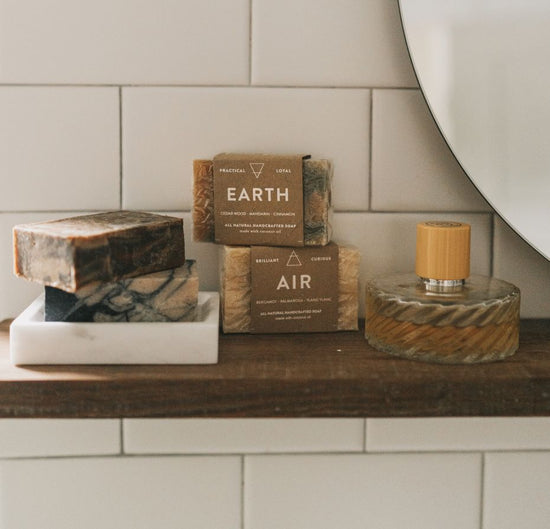
AYURVEDIC SOAP MAKING
Using ancient Indian ayurvedic techniques, our herbal soaps are the perfect balance of purity and fragrance. Artisans boil all-natural ingredients such as rose, sandalwood, basil and turmeric to generate extracts, which are mixed with oils and soap base before being molded and cooled.
-
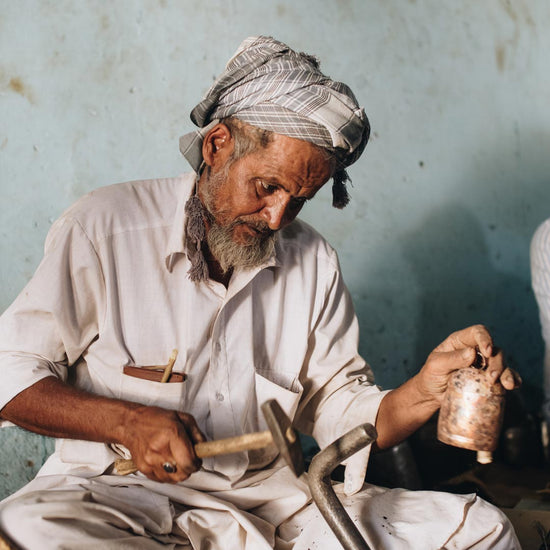
bell craft
Traditionally used by Indian farmers to identify their livestock, each bell is tuned to produce a distinctive chime. Made from recycled metals, artisans in the desert Kutch region manually cut and hammer the metal to hand-shape the bells, then coat them in powdered brass and copper before firing in kilns. Each rustic bell is then tuned to reveal a rich, unique sound like no other bell.
-
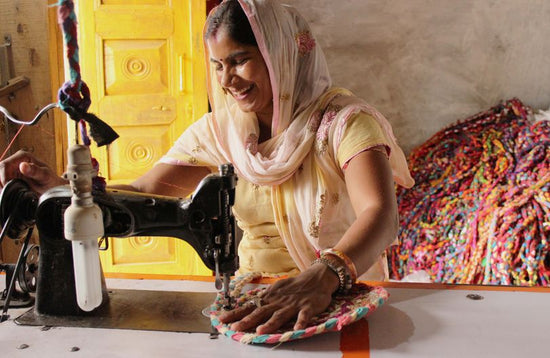
chindi
The origins of chindi weaving come from a humble place. Historically, women began upcycling old cotton clothing, creating useful items for their homes to save money and resources. Now, cotton scraps and sustainable jute fibers are woven together and sewn to create everything from rugs and baskets, to trivets.
-
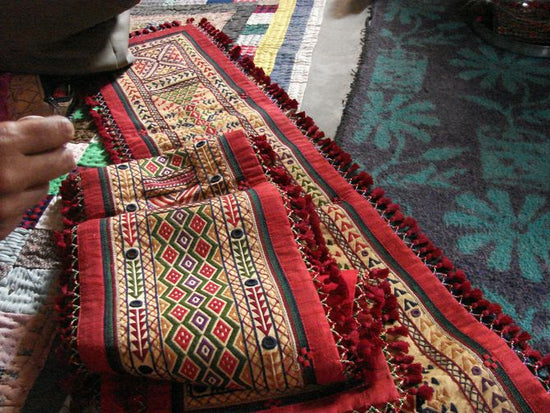
Embroidery
Embroidery art forms were developed by women as a way to embellish their clothing and household items, and many girls in India grow up learning the craft from the women in their families. Every intricate form tells a story through patterns and colors, and each style is representative of an artisan’s region.
-
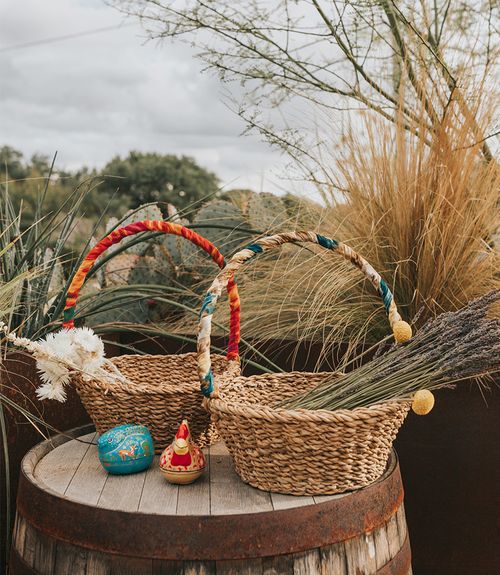
basket weaving
Hogla leaves and Jute plants are some of the most sustainable materials that nature can provide us with. These plants are harvested and dried to convert into strips or fibers. These are then hand braided and weaved into beautiful functional baskets by master artisans in Bangladesh.
-
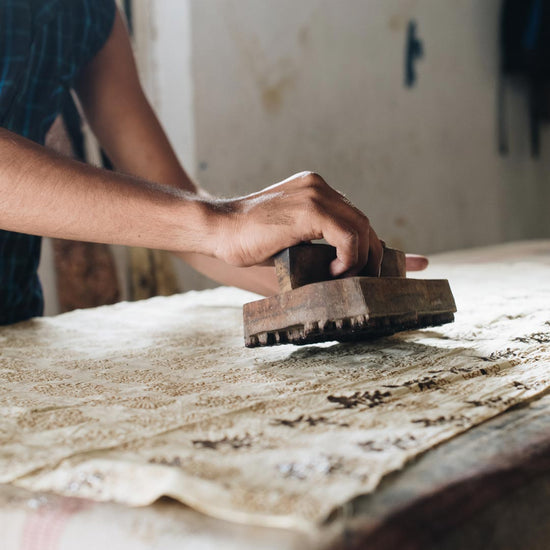
block print
Block printing is a traditional art form native to Rajasthan, India. Artisans hand carve a wood block with patterns inspired by local flora and fauna, dip it into dye, and then carefully stamp the fabric, creating beautiful patterns.
-
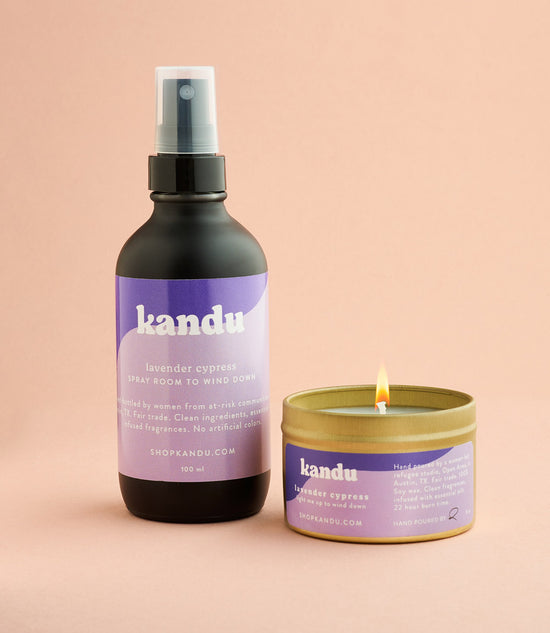
home fragrances
Each Kandu product is hand-bottled & poured by women from at-risk communities in Austin, TX. Our Kandu fragrances are formulated in house using natural essential oils. Our candles use 100% soy wax, cotton wick and eco friendly packaging.
-
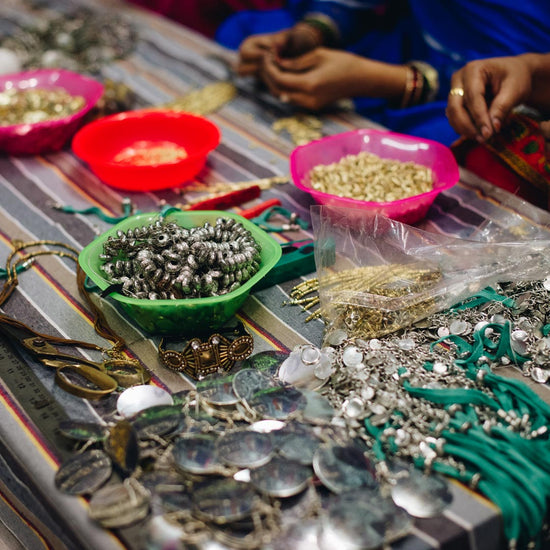
jewelry
Ornate jewelry is a proud cultural tradition in India and every piece in our collection hints at a deeper story. In the sprawling urban center of Old Delhi, our partner group delicately bends, etches, beads and polishes jewelry from stones, glass, upcycled metal and wires, seeds, and other materials.
-
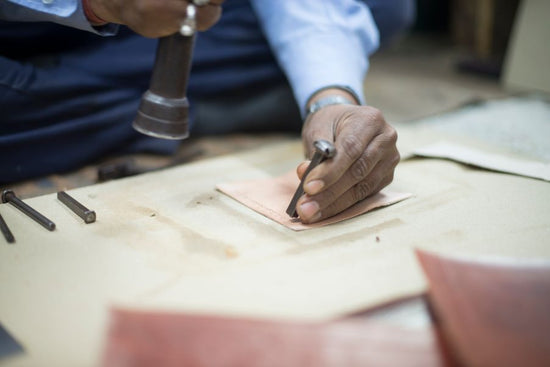
leather craft
In a vegetarian region called Rajasthan, cows are revered and live well. After they pass from old age, their hides are tanned using a vegetable tanning method, which protects the environment and artisans from toxic chemicals. Using hand tools, artisans applies love and skill to stitching, embossing, and embroidering our products.
-
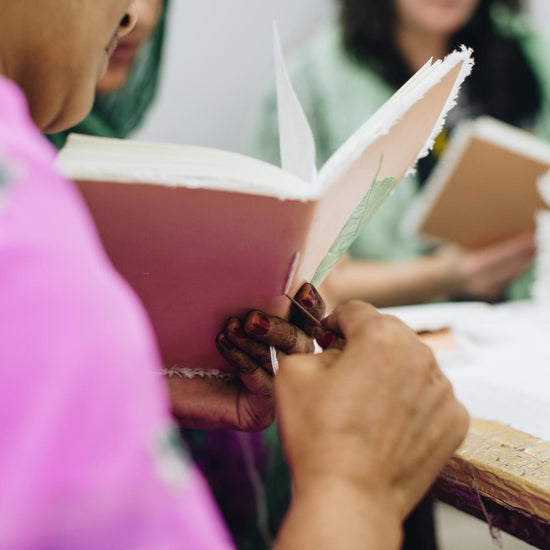
paper making
Cotton scraps are collected from the textile industry and broken down into fibers using a traditional wheel press and soaked overnight. The pulp is strained, pressed into pages and hung to dry. The entire process is tree-free, non-toxic, and conserves and filters water for reuse in irrigation.
-
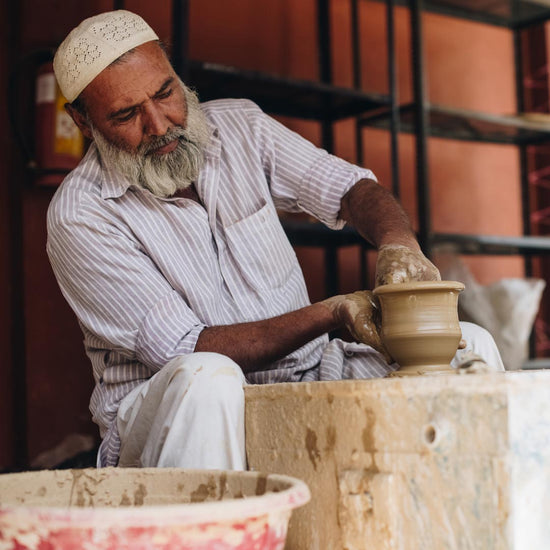
RAJASTHANI POTTERY
Artisans use a potter’s wheel, handmade mold, or their hands to shape natural clay into beautiful pieces of art. Pottery is considered to be a mystical trade because it incorporates five vital elements: air, fire, earth, water, and ether.
-
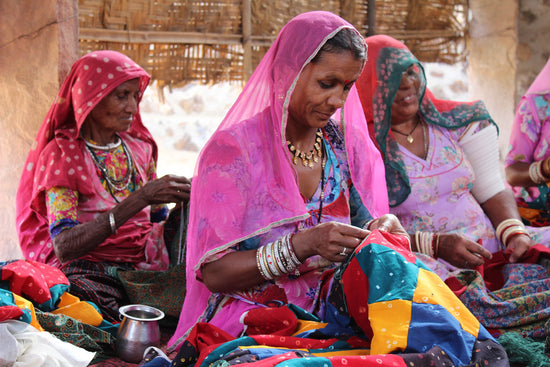
upcycled sari
Hindu goddesses are depicted draped in the colorful garments, and women throughout India wear saris for many occasions. Upcycling saris reincarnates these beautiful fabrics into eco-chic fashion accessories while empowering women artisans to build sustainable livelihoods and communities.
-
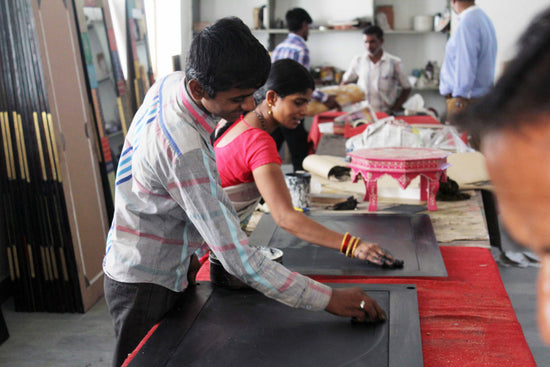
metal work
Metal engraving is an art form that dates back over 500 years to the time of the Rajput Kings in West India. Frames and boxes are made with raw materials such as sustainably harvested wood and the metal engravings are often produced with upcycled and salvaged materials such as aluminum, bronze, and brass.
-
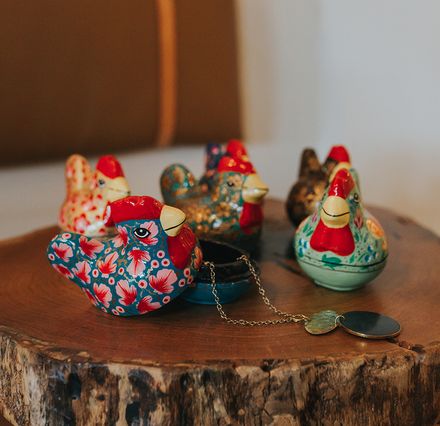
papier mache
Artisans soak used newspaper until it disintegrates, then mix it with cloth, rice or straw to form a pulp. The mixture is molded, dried, and cut into shape. Artisans coat the surface with glue paste, rub it smooth with baked clay, and paste on layers of tissue papers. The base color and motifs are all created freehand with non-toxic paints, then burnished and coated with lacquer.
-

shibori dying
Shibori is the Japanese term for several methods of dyeing cloth with a pattern by stitching, binding, folding, twisting or compressing. Artisans bind sections of cloth with thread to achieve desired patterns. Raw materials used in this process are locally-sourced cotton fabrics and non-toxic vegetable dyes.
-
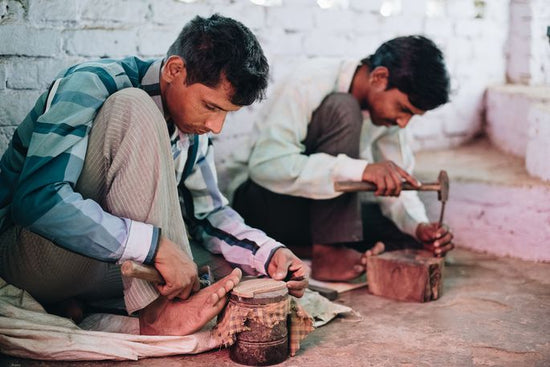
wood craft
Each artisan uses hand tools to skillfully carve blocks of sustainably-sourced wood into fine treasures. This art form requires mastery to create the intricate carving, filigree and inlay work. Many of the patterns are deeply influenced by cultural motifs from dynasties that ruled the region centuries ago. Artisans finish and detail each item with natural wax and non-toxic paints.

















